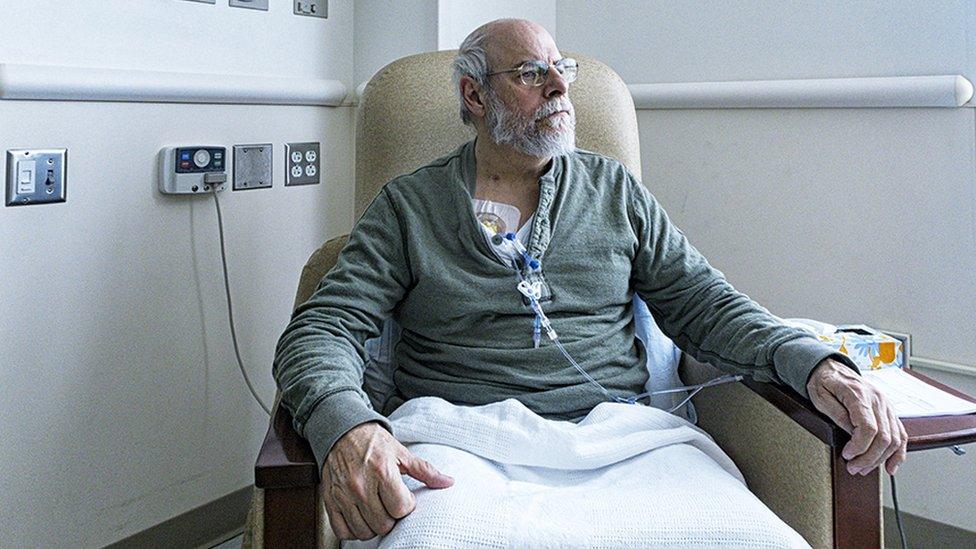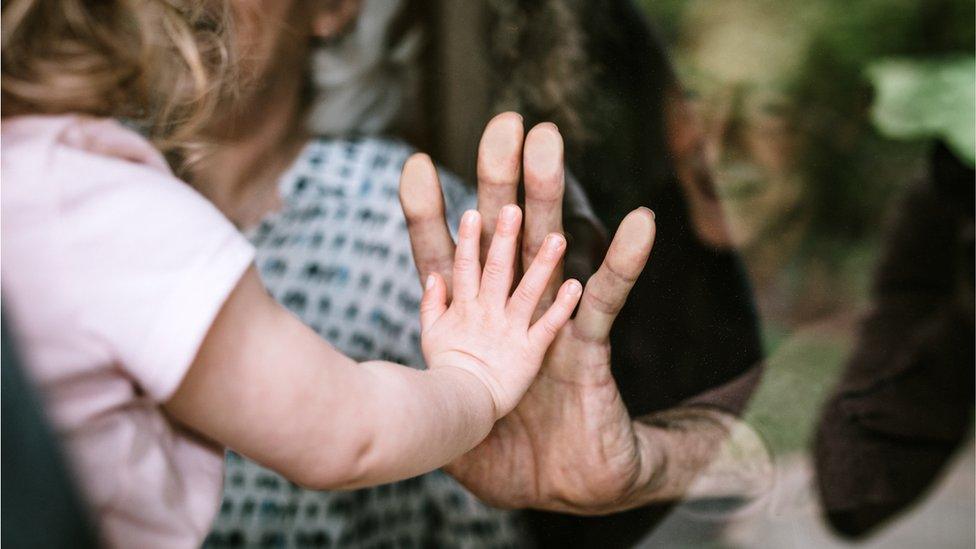Covid risk 'eight times higher' for shielding group, study shows
- Published

A study has examined the outcomes of those advised to shield in Glasgow during the first wave
People who were advised to shield during the first wave of the pandemic were eight times more likely to get Covid-19, a study has suggested.
These people were also five times more likely to die from the virus.
The study examined the outcomes for patients advised to shield in NHS Greater Glasgow and Clyde (NHSGGC) between March and May last year.
The Scottish government pointed out that the study was limited to one geographical area.
It also said it did not take into account a number of factors, such as ethnicity, rurality, exposure to health and social care workers, and compliance with restrictions.
Prof Jill Penn, one of the authors, said the measure may have had "limited value" in reducing NHS workload.
The study was led by the University of Glasgow and published in the journal Scientific Reports, external on Tuesday.
It looked at data from more than 1.3 million patients registered with GP practices in NHSGGC, of which 27,747 had been advised to shield.
More than half of these people (55.78%) had severe respiratory disease, while a much smaller percentage were on immunosuppressive therapies (16.44%) or had specific cancers (7.66%).
A further 353,085 were classed as moderate risk due to health conditions like chronic lung disease, hypertension or diabetes.
Researchers said those at moderate risk were four times more likely to test positive for the virus than the low-risk group.
These people were five times more likely to die following confirmed infection, the study found.
It also showed that people aged 70 and over accounted for almost half (49.55%) of deaths in the health board.
'Widely expand' criteria
In the shielded group, there were 299 (1.1%) confirmed infections and 140 (0.51%) deaths.
In the moderate-risk group, there were 1,859 (0.53%) confirmed infections and 803 (0.23%) deaths, and in the low-risk group, there were 1,190 (0.13%) confirmed infections and 84 (0.01%) deaths.
Therefore compared with the remaining 934,239 people classed as low risk, people advised to shield were eight times more likely to get infected and five times more likely to die after infection was confirmed.
Prof Jill Pell, director of the University of Glasgow's Institute of Health and Wellbeing, said the study showed that shielding may be "of limited value" in reducing burden on the NHS because high-risk patients were more likely to die in spite of the strategy.
She said: "Our study highlights that to effectively protect high-risk individuals, shielding should be used alongside other population-wide measures such as physical distancing, face coverings and hand hygiene.
"We believe that, to be effective as a population strategy, shielding criteria would have needed to be widely expanded to include other criteria, such as the elderly."
'Confident' in programme's success
A Scottish government spokesman said: "While we are no longer asking people to shield in the same highly-restrictive way we did during the first wave of the pandemic, we are confident the shielding programme helped vulnerable people who were at risk of Covid at that time.
"This study is limited to one geographical area and doesn't take into account a range of factors including ethnicity, rurality, exposure to health and social care workers, and compliance with restrictions. It also highlights that the findings are representative of the Glasgow and Greater Clyde area but may be less so for other areas.
"As Scotland has progressed to Level 0, it is now safe for those at the highest risk to follow the same guidance as the rest of the population due to the success of the vaccination programme. We would encourage all those who are able to get vaccinated as soon as possible, though we understand there are a very small number of people whose health condition or age prevent them from doing do."


- Published9 July 2021

- Published23 July 2020
